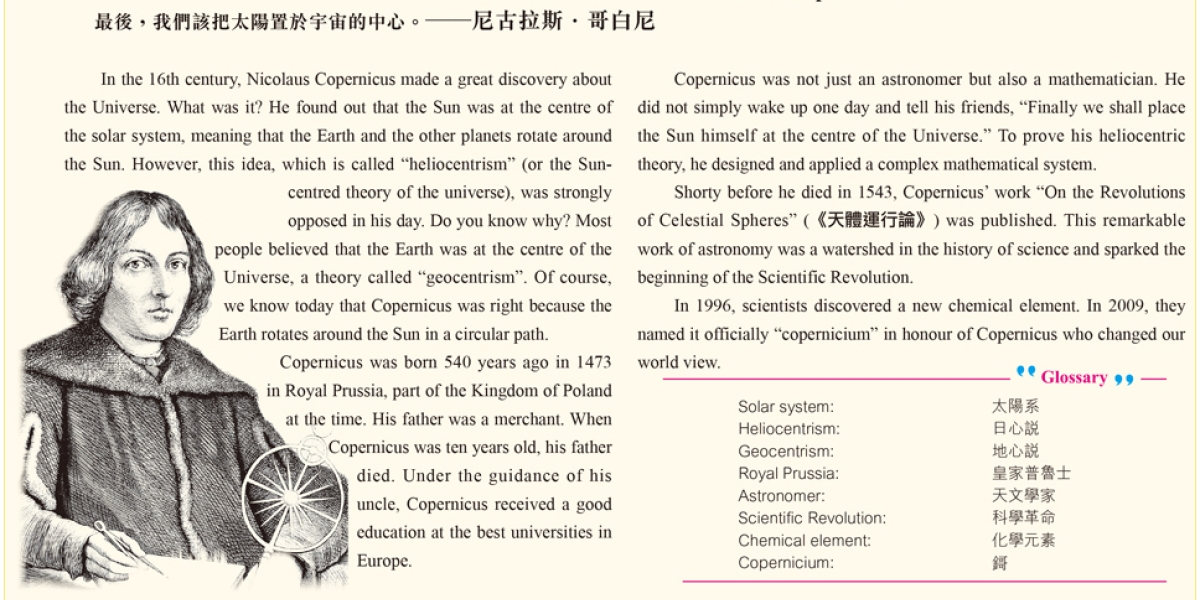
Finally we shall place the Sun himself at the centre of the Universe. — Nicolaus Copernicus | 最後,我們該把太陽置於宇宙的中心。──尼古拉斯.哥白尼
In the 16th century, Nicolaus Copernicus made a great discovery about the Universe. What was it? He found out that the Sun was at the centre of the solar system, meaning that the Earth and the other planets rotate around the Sun. However, this idea, which is called “heliocentrism” (or the Sun-centred theory of the universe), was strongly opposed in his day. Do you know why? Most people believed that the Earth was at the centre of the Universe, a theory called “geocentrism”. Of course, we know today that Copernicus was right because the Earth rotates around the Sun in a circular path.
Copernicus was born 540 years ago in 1473 in Royal Prussia, part of the Kingdom of Poland at the time. His father was a merchant. When Copernicus was ten years old, his father died. Under the guidance of his uncle, Copernicus received a good education at the best universities in Europe.
Copernicus was not just an astronomer but also a mathematician. He did not simply wake up one day and tell his friends, “Finally we shall place the Sun himself at the centre of the Universe.” To prove his heliocentric theory, he designed and applied a complex mathematical system.
Shorty before he died in 1543, Copernicus’ work “On the Revolutions of Celestial Spheres” (《天體運行論》) was published. This remarkable work of astronomy was a watershed in the history of science and sparked the beginning of the Scientific Revolution.
In 1996, scientists discovered a new chemical element. In 2009, they named it officially “copernicium” in honour of Copernicus who changed our world view.
Solar system: 太陽系
Heliocentrism: 日心說
Geocentrism: 地心說
Royal Prussia: 皇家普魯士
Astronomer: 天文學家
Scientific Revolution: 科學革命
Chemical element: 化學元素






